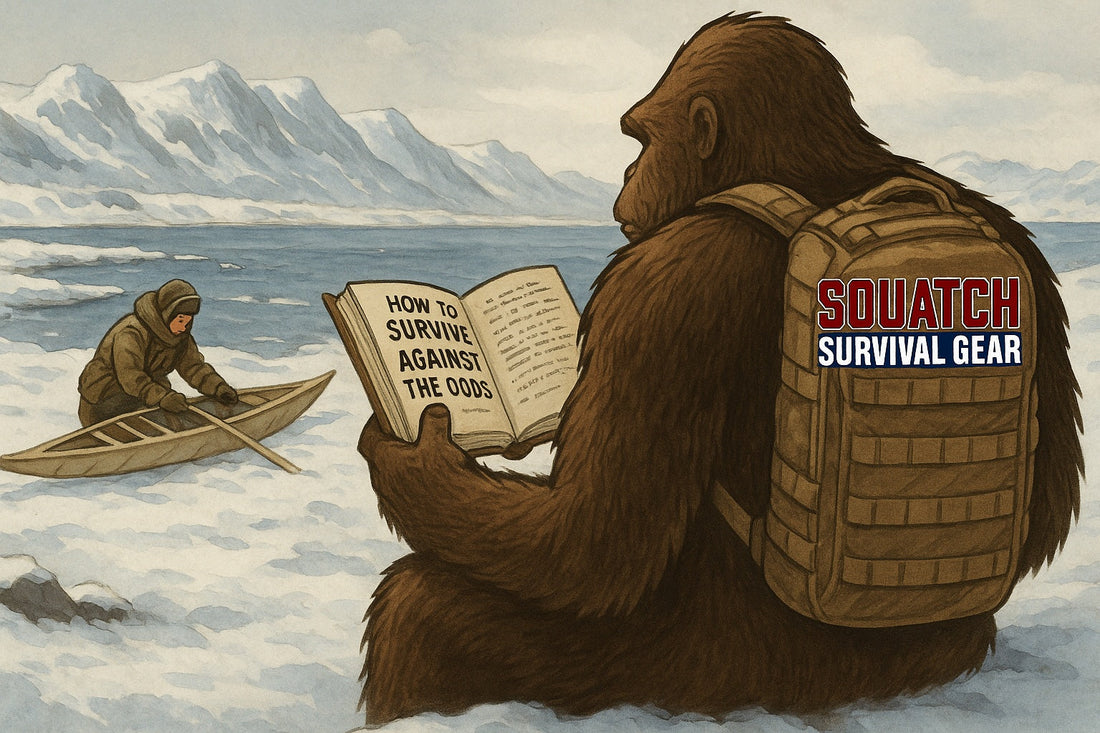Survival Lessons from Wrangel Island and the Harshest Cold on Earth
Chapter 5 of How to Survive Against the Odds drops us into one of the most unforgiving places on Earth—Wrangel Island in the Russian Arctic. The story centers on a woman of Inupiaq descent who finds herself abandoned in the early 1920s. With limited first-hand survival experience, she becomes the embodiment of resourcefulness, teaching herself to endure the brutal cold and isolation.
What sets this chapter apart is that she didn’t start as an expert—she became one through necessity.
❄️ Lessons from the Cold
1. Learn by Doing
Though she had only observed others build canoes or use rifles, she didn’t let inexperience stop her. She taught herself to shoot, hunted game, and successfully built two canoes—proving that observation and willpower can bridge the gap when training isn’t an option.
2. Calories Are Life
In the Arctic, your body burns massive calories just trying to stay warm. She fought fatigue and scurvy with a diet heavy in fat and protein. Modern survivalists should remember: you need more fuel when it’s freezing.
3. Hydration Is Critical (Even in the Cold)
Don’t be fooled by snow everywhere. You still need to hydrate regularly. She melted ice and snow carefully, knowing how dangerous dehydration could be in sub-zero temps.
4. Layer Smart
This chapter does a fantastic job explaining how to layer clothing properly, protect extremities, and avoid heat loss. She protected her core and limbs, kept her hands and feet dry, and respected the sun’s reflection on snow—which can cause snow blindness.
5. Watch the Eyes
The Arctic sun is deceptive. Without modern sunglasses, she still managed to reduce exposure to reflected UV by using makeshift eye protection. Snowblindness can ruin your chances of navigating or hunting.
6. Polar Bear Deterrence
The chapter gives real insight into the behavior of polar bears—and how to deter them without confrontation. Noise, scent discipline, and vigilance made the difference.
7. Build Shelter from the Landscape
One of the most practical sections details how to build an igloo—including airflow, insulation, and structure. It’s not just about warmth—it’s about survival engineering. This chapter does a good job of showing the weakness of just canvas tent on Wrangel island.
🧭 What Would Squatch Do?
While most of us won’t face a polar bear or have to build an igloo from scratch, the principles in this story still apply today.
What to Pack for Arctic Conditions:
-
Layered Wool Clothing: Merino base layers, midweight fleece, and windproof outer shells
-
Woobie Hoodie: For insulation and packable warmth
-
Cold-Weather Pack: Choose the Grassman or Yowie for carrying layered clothing, hunting gear, and survival tools
-
Storm Whistle & Signal Mirror: For alerting rescue teams
-
Compact Cook Kit + Fat-rich Meals (like XMREs): For sustained energy
-
Polarized Eye Protection: Snowblindness is real. Sunglasses aren’t optional.
And as always—know your gear before you need it.
🎒 Final Thoughts
This chapter isn’t about a survival expert—it’s about someone who became one because she had to. Her quiet grit and willingness to learn made the difference between life and death. That mindset—adapt, learn, endure—is the heart of real survival.
And it’s exactly the kind of spirit we design for at Squatch Survival Gear.

